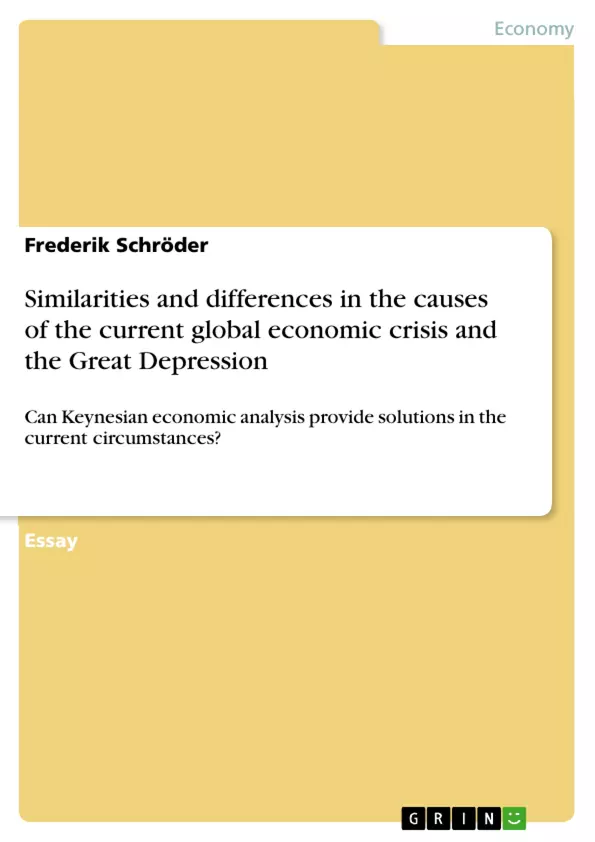The global economy is currently facing a severe recession with falling output, rising unemployment and a high degree of uncertainty. Parallels can be drawn between the causes of the current crisis and those of the Great Depression of the 1930s. The most salient causes of the Great Depression were a speculative bubble, the resulting stock market crash of 1929 and misguided policy reactions by central banks and governments. Tight monetary policy and a fallback to protectionism led to the collapse of the international economy. This further created business uncertainty, which together with financial disintermediation and bank runs resulted in shattered confidence levels and a subsequent, hardly stoppable, downward spiral of economic activity. Similarly, the current economic crisis began with a speculative asset bubble crash, followed by a shortage of credit supply and extremely low confidence levels and high uncertainty. However, due to an improvement in the
understanding of macroeconomics policy makers’ toolkits have been enhanced. This has led to appropriate reactions by fiscal authorities and central banks providing liquidity to markets. However, specific circumstances are unique and errors were made nonetheless. To spare the world from “The Great Depression II” Keynesian fiscal stimuli in form of tax cuts targeted at liquidity constrained agents are necessary. Monetary policy can only be effective to stimulate aggregate demand when confidence is reestablished and the lending mechanisms start working again.
Inhaltsverzeichnis (Table of Contents)
- Similarities and differences between the causes of the Great Depression and the current global economic crisis
- Keynesian Economic Analysis and the Current Crisis
Zielsetzung und Themenschwerpunkte (Objectives and Key Themes)
The main objective of this paper is to analyze the similarities and differences between the causes of the Great Depression and the current global economic crisis, and to assess the extent to which Keynesian economic analysis can provide solutions in the current circumstances. The paper explores the role of asset bubbles, the impact of policy responses, and the importance of confidence and liquidity in both crises.
- The role of asset bubbles in triggering economic crises
- The impact of misguided policy responses, particularly monetary and fiscal policies
- The importance of confidence and liquidity in economic recovery
- The effectiveness of Keynesian economic analysis in addressing economic crises
Zusammenfassung der Kapitel (Chapter Summaries)
- The paper begins by examining the similarities and differences in the causes of the Great Depression and the current global economic crisis. Both crises were triggered by the burst of asset market bubbles, but the specific assets involved differed. The Great Depression was rooted in the stock market bubble, while the current crisis stems from the collapse of the housing market. The paper further explores the role of speculative behavior, policy responses, and the impact on confidence and liquidity.
- The paper then delves into the potential of Keynesian economic analysis in addressing the current crisis. It highlights the challenges of stimulating aggregate demand in an environment of low confidence and credit constraints. The paper argues that fiscal stimuli, such as tax cuts targeted at liquidity-constrained agents, are crucial, while monetary policy can only be effective once confidence is restored and lending mechanisms are functioning again.
Schlüsselwörter (Keywords)
This paper focuses on the global economic crisis, the Great Depression, Keynesian economics, asset bubbles, speculative behavior, monetary policy, fiscal policy, confidence, liquidity, and credit constraints. It examines the effectiveness of Keynesian economic analysis in addressing economic crises and the importance of appropriate policy responses in mitigating economic downturns.
- Quote paper
- Frederik Schröder (Author), 2009, Similarities and differences in the causes of the current global economic crisis and the Great Depression, Munich, GRIN Verlag, https://www.grin.com/document/189030



